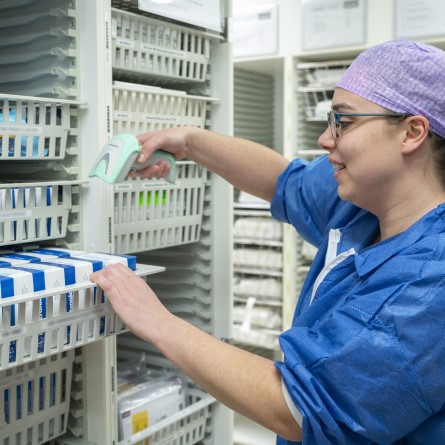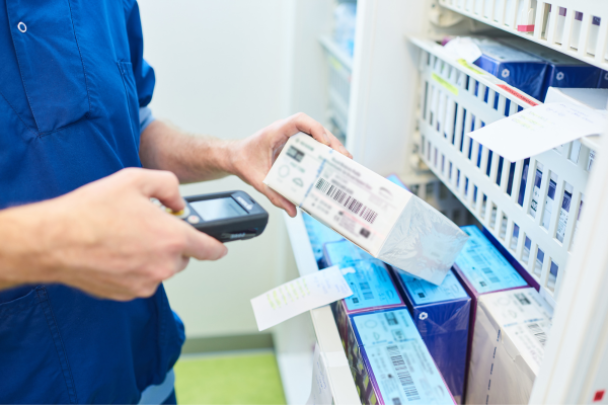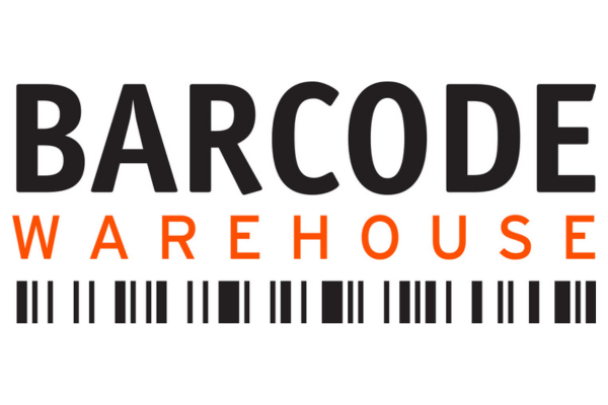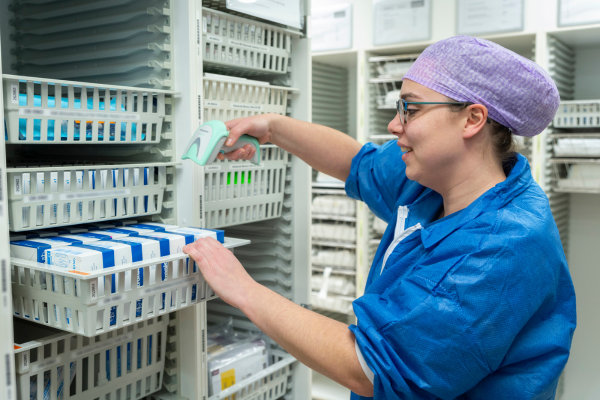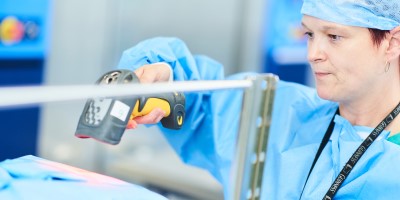
Implementing barcode technology throughout NHS workflows and efficiently and accurately sending data to the national mandatory Medical Device Outcome Registry (MDOR) is pivotal in enabling a sustainable NHS for the future.
With the Scan4Safety initiative that already kick-started in 2016, there are some great examples and blueprints of the positive impacts adopting this kind of technology can deliver positive outcomes on patient safety, efficiency, cost saving, patient and staff satisfaction and overall improved workflows.
There are questions, however, around whether the mandate deadline of March next year is truly realistic, and how can barcode technology be rolled out that quickly on mass, with NHS trusts being at different stages of digitalisation? The benefits of this mandate are huge, but there are challenges to overcome if it is to be successful, and on time.
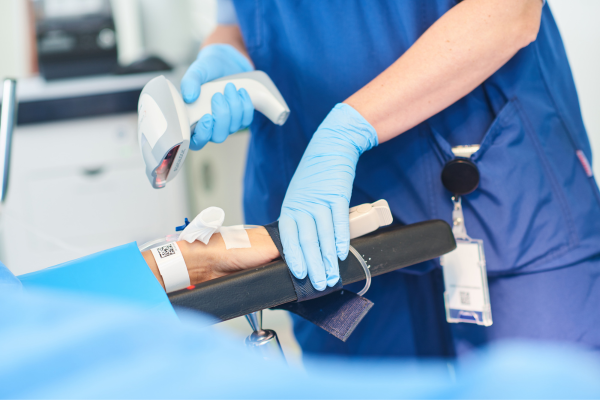
What does the mandate mean in practice?
It’s important to look at what the mandate consists of and what will be required of trusts. In a move which focuses on digitalisation and long-term sustainability for the NHS, the UK government’s mandate specifically calls out that “all trusts should adopt barcode scanning of high-risk medical devices” by March 2024.
This follows the successful implementation of the Scan4Safety initiative in 2016, which saw six trusts across the country adopt GS1-compliant point-of-care barcode scanning to uniquely identify every person, product and place. [i]
Since then more than 40% of acute trusts in England have adopted some form of Scan4Safety equipment. At these trusts, all patients, staff, and equipment including implantable medical devices were given barcodes via wristbands, badges, and labels, to be scanned before procedures. Not only was this move found to improve patient safety by making teams involved in procedures identifiable and processes of care traceable, but the time taken to recall products was also seen to fall from weeks and months to just minutes.
Stock management became more straightforward and efficient and over 140,000 hours of clinical time was freed up[ii] and released to care – a very significant saving given the news that in July NHS waiting lists hit a record high in England[iii], as 7.47 million people waited for routine hospital treatments.
By pinpointing the right barcode technology to trusts’ pain points, the mandate will benefit the experiences of both staff and patients as well as the trusts and wards themselves.
What are the challenges and how do trusts overcome these?
Whilst this first initiative proved to be successful, there are still issues which will arise when looking at implementing a blanket mandate for all trusts across England.
We know that not all trusts are at the same level, whether this be financially, physically or in relation to where they are on their digital journey, despite the release of funding by NHSX[iv] last year which aimed to bridge the gaps when it came to digitalisation across NHS trusts. With many across England participating in the NHS’ ‘Recovery Support Programme’[v] which helps hospitals facing significant problems with the quality of the care they provide as well as financial issues, it is clear there are other basic priorities for many which don’t focus on digitalisation. When trusts and their needs are so different across the country, it is difficult to apply one blanket mandate to suit all.

The mandate is a steep ask for a short length of time. Implementing such a unique digital process across all hospitals and in all trusts will take a significant amount of time to ensure it is working efficiently, and with little more than half a year to go, it could prove to be a challenge for those who are currently at the lower end of the digitalisation scale. There are also a limited number of NHS-focused providers, meaning it will be a race for trusts to secure the best support possible and for suppliers to meet the heightened demand.
Despite these barriers, there are steps trusts can take to ensure they are moving ahead as swiftly and efficiently as possible.
For those at both ends of the digitalisation scale, it is important to start small when implementing such significant technology as the mandate requires. Phasing it in will have a much more positive effect than if trusts were to implement it all in one big move as it will allow for flexibility, ensuring different hospitals can adapt its use according to their needs. Using a phased approach will also mean that trusts are being provided with the correct solutions to fit their individual requirements. By using the right approach, MDOR will become a vital source of information for all, from healthcare providers to the device manufacturers, as we have seen with some solutions providers.
This will also mean staff are given the chance to properly understand the technology, so it is used in the most efficient and safe way, again having a positive impact on patient safety.
Communication and advocacy within the organisations will be crucial, as will working with the right stakeholders. Developing a true understanding within the workforce and the wider public as to the importance and impacts of digitalisation will make way for a much more successful experience for all involved. Since the first implementation of barcoding within the healthcare industry, the conversation has been growing surrounding the benefits of the technology. The deadline is a clear reflection of the vital role barcode scanning can have and it is important the evidence of this is understood.
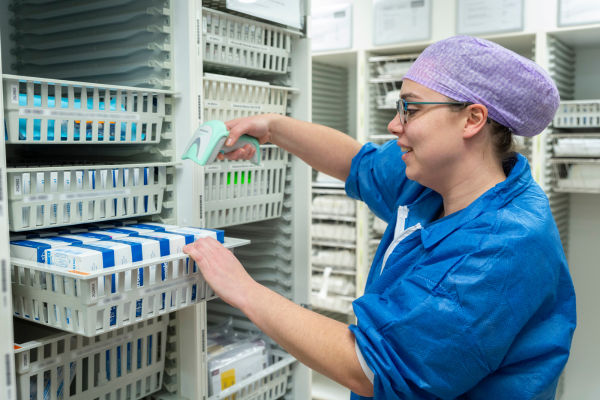
What will a barcoded NHS look like?
For some, the idea of a ‘barcoded NHS’ may seem a daunting and unusual prospect but if trusts can overcome the challenges in implementing it, the benefits could be monumental for the healthcare system.
The implementation of barcode scanning within the healthcare industry will work in tandem with the likes of the Medical Device Outcome Registry platform (MDOR) when it comes to high-risk procedures. By capturing data on over two million medical device procedures and over 10 million unique devices used on patients each year across the NHS, it will mean that there is a greater understanding of patient safety in response to the Cumberlege review.[vi]
The use of GS1 compliant barcodes and scanning technology will mean both patient and equipment journeys can be tracked, which not only is of benefit from a procurement perspective but will minimise errors which have significant impacts on patient safety. For example, out-of-date equipment can be traced and any human errors, such as those which can occur with the inputting of data, can be identified and rectified. Mitigating the challenges that arise with out of date and faulty implants will of course go someway in improving patient care too, highlighted by the Cambridge Review. Also from a patient experience perspective, the use of barcodes will mean staff become much more efficient in how they work, with information more easily accessible. This will have a positive knock-on effect for patient outcomes, but it doesn’t end here.
Going beyond point-of-care scanning
The Scan4Safety initiative doesn’t end with point-of-care scanning and high-risk medical devices, the next phase of the initiative will provide NHS trusts with the next real game changer in health tech management – the implementation of real-time location system (RTLS) technologies, such as radio-frequency identification (RFID). This will enable employees to track the precise location and movements of medical equipment and patients as they progress through different areas and stages of care. An effective RFID asset tracking system ensures frontline staff have real-time visibility of key equipment to ensure high-quality patient care. The RTLS system data will provide NHS trusts with useful insights into a patient’s journey and the flow of patients through individual departments – resulting in significant time and cost savings in the transformation of clinical and administrative processes.
Some NHS trusts, such as Hull University Teaching Hospitals, have already implemented asset tracking and RTLS technologies within their hospitals. On average staff spent approximately 56 minutes a week looking for items, however with the introduction of RTLS, this has been significantly reduced to only 4 minutes, saving on average 35 hours a year per employee.

Commenting on the mandate, head of healthcare at GS1 UK, Glen Hodgson adds, "The barcode scanning mandate is welcome following the recommendations outlined in the Independent Medicines and Medical Device Safety Review. The recent mandate provides a great opportunity for the NHS but we need to make sure the data is unique to ensure its quality and accuracy. This is what will drive the traceability benefits needed for the MDOR.
"The evidence exists in the Scan4Safety report and the scope for transformation is broad. It is now about implementing point-of-care scanning at scale to truly make a lasting difference to patient outcomes."
An additional benefit for trusts is easy access to data surrounding drugs and equipment to give staff greater control and visibility over stock levels and rotations. This will not only reduce physical waste but also the time spent looking for required items and chasing suppliers, with all information being available in real time, in the palm of a hand. A far more streamlined approach will be enabled by allowing staff to work smarter and more efficiently, handing them back the time to focus on their jobs instead of wasting it on unnecessary tasks.
With benefits such as these, trusts should be working to proactively implement the features of this mandate, whether they are able to deliver this on time or not. Working with technology solution providers to overcome the challenges of implementing barcode technology will be a huge step in moving towards a more efficient and safer digitised NHS for all, and it is crucial that trusts, patients and staff alike realise this.
